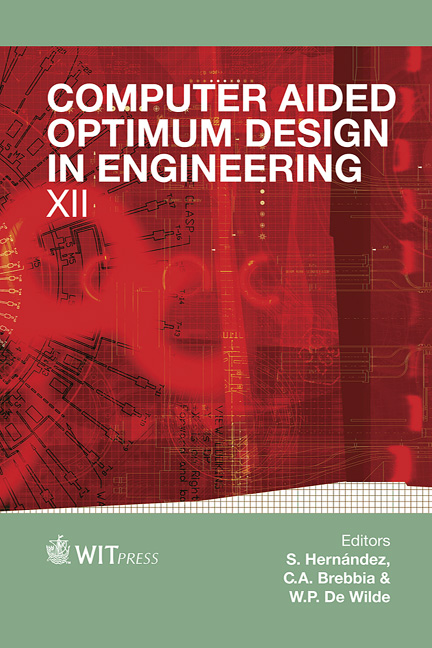A Systems Approach To Shape And Topology Optimisation Of Mechanical Structures
Price
Free (open access)
Transaction
Volume
125
Pages
10
Page Range
145 - 154
Published
2012
Size
499 kb
Paper DOI
10.2495/OP120131
Copyright
WIT Press
Author(s)
K. Fiedler, B. F. Rolfe, A. Asgari & T. de Souza
Abstract
Optimisation techniques have become more and more important as the possibility of simulating complex mechanical structures has become a reality. A common tool in the layout design of structural parts is the topology optimisation method, which finds an optimum material distribution within a given geometrical design space to best meet loading conditions and constraints. Another important method is shape optimisation, which optimises weight given parametric geometric constraints. In the case of complex shaped parts or elaborate assemblies, for example automobile body structures, shape optimisation is still hard to do; mainly due to the difficulty in translating shape design parameters into meaningful analysis models. Tools like the parametric geometry package SFE CONCEPT are designed to mitigate these issues. Nevertheless, shape methods usually cannot suggest new load path configurations, while topology methods are often confined to single parts. To overcome these limitations the authors have developed a method that combines both approaches into an Integral Shape/Topology Method (IST) that is capable of finding new optimal solutions. This is achieved by an automated optimisation loop and can be applied for both thin walled structures as well as solid 3D geometries. When optimising structures by applying IST, global optimum solutions can be determined that may not be obtained with isolated shape- or topology-optimisation methods. Keywords: topology optimisation, shape optimisation, simultaneous shape and topology optimisation, structural optimisation, IST.
Keywords
topology optimisation, shape optimisation, simultaneous shape andtopology optimisation, structural optimisation, IST.





